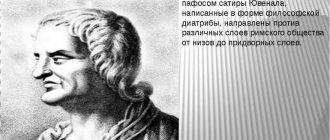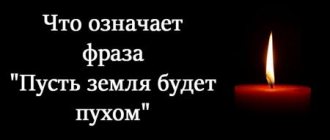The ending of "The Nun" was the most shocking of all the films in the "Conjuring" franchise. The film's ending references the original series, revealing a long-standing, dark connection. Such tie-ins have become a franchise tradition. For example, Annabelle took the doll to Ed and Lorraine Warren (Patrick Wilson and Vera Farmiga), while the prequel Annabelle: Creation led directly to the title scene of the first film. But The Nun ties directly into its parent franchise - the film introduces Valak as the main villain.
The evil demonic force known as Valak was first shown in The Conjuring 2. He was most often seen in the form of a ghostly nun. In James Wan's 2021 sequel, this demon plots to kill Ed Warren in order to subdue Lorraine and bring the teenage girl into real life in Enfield. Luckily, Warren revealed his name and Lorraine was able to banish Valak to Hell. In Annabelle: Creation, it was revealed that the Nun had previously lived in a Romanian monastery - in the post-credits scene there was a bold hint of a sequel.
"The Nun's Curse" explores the origins of Valak and his ghostly form. Corin Hardy's film follows Father Burke and Sister Irene, two Vatican envoys who investigate the suicide of a nun in Romania. It quickly becomes apparent that something mysterious is happening at the monastery. Of course, viewers already know what typically awaits those who date Valak. But even seasoned fans had no idea what would be revealed at the end of The Nun.
Origin of Valak and the Nun
In The Conjuring 2, we learned that Valak is a demon from hell. His full name is Valak, the Defiler, the Profane, the Marquis of the Serpent. "The Nun's Curse" revealed a more detailed origin story for this monster.
According to Sister Oana (or rather, her ghost, recreated by Valak), during the Dark Ages, the Duke of St. Carth tried to use the monastery to open the gates to Hell and spread unspeakable evil across the Earth. This evil was Valak, who almost broke through into our world, but the Catholic Church killed the Duke and sealed the portal using the real blood of Christ (something similar to the Holy Grail).
By the way, before we forget. There are not many resources on the Internet now that provide meaningful analytics on films and TV series. Among them is the telegram channel @SciFiNews, whose authors write the most useful analytical materials - analyzes and fan theories, interpretations of post-credit scenes, as well as the secrets of bomb franchises, like the MARVEL and Game of Thrones . Subscribe so you don’t have to search later - @SciFiNews. However, back to our topic...
As the plot of The Nun progresses, we see the true appearance of Valak, which was also described in the books mentioned by Father Burke - this is a black demonic figure, similar to the demons from the Annabelle series.
However, more often Valak takes on the guise of a Nun in order to integrate into the life of the monastery. It is not entirely clear why the demon remains in this form when it tries to enter the outside world. Perhaps this is due to the fact that Valak feeds on fears, and many people in the area are afraid of the sinister nun.
Valak was released during World War II when bombs damaged the abbey and broke the seal that held the demon. Since then, the monks have prayed around the clock to keep the evil at bay. Eventually, however, their efforts were interrupted, Valak was freed and all the sisters were killed. This led to the events that were shown in the film.
Reviews
I think few people will argue with the fact that one of the main trends of modern cinema is the construction of a “single cinematic universe”. Inspired by the success of Marvel comic book adaptations, more and more studios are trying to build their own universe. Sometimes long before the release of the first film on the screens and sometimes with a stretch tying absolutely independent films to each other, as in the case of “Cloverfield”. The cinematic universe of The Conjuring, once started by James Wan, is certainly one of the most successful and interesting among them. The next step in its development was this film directed by Corin Hardy.
.
The plot of this film develops in Romania in the middle of the last century. After a whole chain of terrible events and the “final chord” in the face of the suicide of one of the nuns, the Vatican decides to send Father Burke and Sister Irene to a remote church. Not only to figure out what is happening within the sacred walls of the church, but also to find out whether this place is still sacred. For several years now, The Conjuring Cinematic Universe has been following a rather interesting and unusual practice. To briefly demonstrate the next demon and evil “on the sidelines.” Then, dedicate an entire independent film to him and reveal him in a solo film. This film is no exception. However, after a very promising and promising episodic debut in the sequel to The Conjuring, Valak unfortunately received a far less impressive realization. Of course, one of the main shortcomings of the film is the script. No matter what anyone says, the previous films in the universe readily captivated us with their tight interconnections and truly interesting stories. Which, unfortunately, is not in this tape. Despite the Warrens' cameo at the beginning and end of the film, which creates the appearance of a single universe, this film directed by Corin Hardy
stands apart.
Moreover, the script for the film turned out to be frankly simple, primitive and boring. The creators of the tape were clearly exhausted and did not torture themselves when writing the text. In my opinion, it stupidly copied all the conceivable and inconceivable cliches of the genre, and also very roughly stitched them together on the screen. Leaving not only the main characters undeveloped, but also Valak himself, whose enormous potential, in my opinion, turned out to be completely ruined. Corin Hardy
’s direction that ennobles the film to some extent .
Having made his mark with a very good debut, “Out of Darkness,” Hardy
again showed himself to be a very good director.
In many ways, this manifests itself in the atmosphere. Unlike most modern directors, who prioritize spectacle over atmosphere, Hardy
did the opposite.
The picture is superbly maintained in an atmosphere of complete and growing tension, an undiminished sense of anxiety and luxurious suspense, the power of which is only strengthened by the visionary qualities of Corin Hardy
, music by Abel Kozeniowski and excellent cinematography by Maxim Alexander.
However, as described above, the entertainment part suffered and it is not surprising why the BU moments turned out to be so boring and simply staged on the screen. It is very interesting that one of the main roles in the film was played by young Taissa Farmiga
, whose more eminent and older sister is one of the “frontmen” of the franchise.
Taissa
noticeably loses to her more eminent sister
Vera Farmiga
.
However, he plays quite well throughout the entire film. Demian Bichir
made a slightly mixed impression .
It would seem that Bishir
played not badly.
However, knowing the actor’s other roles, it is clear to the naked eye that the actor, for some reason, did not give his best. It is impossible not to mention Valak himself, who was very impressively embodied on the screen by Bonnie Aarons
.
It's a shame that the potential of one of the most charismatic and promising villains in horror films was ruined by the script. 5 out of 10 The Curse of the Nun is perhaps the weakest representative of the Conjuring Cinematic Universe at the moment, which was completely ruined by an extremely poorly written script. In fact, negating the enormous potential of this tape. If it weren’t for at least some attempts by the actors, as well as the excellent visualization and direction of this film, it would have turned out to be a very bad film. In the meantime, it turned out to be a vivid example of a picture from the “looked and forgot” series.
How Sister Irene and her companions defeated the Nun
Much of the film follows Burke and Irene as they investigate the monastery to find out what happened. In the end, they discovered the truth: as it turned out, the monastery was empty - there was only Valak in it, who was playing with them. They also find out that the demon is looking for a new owner. Now Burke and Irene's goal is to defeat the Nun once and for all.
The method is quite simple. The third act of The Nun is a series of grisly sequences rather than a complex plot. Using her intuition, Irene obtains a vial of Christ's blood. During the battle with Valak using sacred blood, the demon seems to be exorcised.
How did the letter come about?
This happened in 1676. One day the woman woke up early in the morning, long before her usual wake-up time. She was surprised to find that her fingers were stained with ink, and there was a letter on the small table.
Pensioners invented the “Useless Machine”, which was exhibited in the museum
To prevent diseases and a few more reasons to include spicy foods in your diet
There are only a few days left before Nikita Dzhigurda's wedding: he is marrying his ex-wife
Maria was convinced that she did not write it, but was fast asleep. She was not bothered by nightmares, she did not feel overwhelmed. The nun picked up the strange message and could not make out a single word. The sheet either contained a meaningless set of characters, or the text was written in a foreign language.
Of course, she immediately told the other nuns about everything. At the same time, Maria decided that the letter was sent by the devil himself, who entered her body during her vacation. The monastery did not doubt that the message was written by the devil. They put it away in a hiding place and went to morning prayer.
How the Nun Possessed Frenchie
After defeating Valak, the three main characters bury the sisters in the area that surrounds the monastery. However, once they are out of sight, it is revealed that the Frenchman (Maurice), who intends to grow tomatoes, has an inverted cross mark on the back of his head. This means that Valak survived, capturing a new master. Now he was finally able to leave the Romanian monastery!
This twist is simply shocking. The last time we saw Maurice saving Irene with mouth-to-mouth resuscitation. This makes sense of what we have seen so far. During the battle, Valak captured Irene. She frees herself as Maurice sprays blood. We don't see what happens after this. Valak appears, and then Frenchy. It is obvious that he has become obsessed. This explains why Valak played with Irene. He took pleasure in killing her, knowing that the main goal had already been achieved - which meant that the splashing of blood was pointless.
We don't know what happened next to Burke and Irene, but their faith is clearly rewarded. Most likely, this is the last time we see them. The same applies to Frenchie.
About the plot: Either write “God is dead” or you will get a “failure”
This means that a student comes to a lecture on philosophy and prepares to listen to intelligent discussions about the ultimate foundations of Existence. And then such a former Hercules in a fashionable jacket comes out to the pulpit, shows the audience a board on which the names of philosophers and thinkers are crookedly written in blue marker: “Foucault, Feuerbach, Nietzsche, Santayana, Diderot, Mill, Dawkins, Chomsky, Russell, Brecht, Rand, Democritus, Hume, Camus, Freud." And he asks: “What do all these outstanding people have in common?”
This is definitely a trick question. Yes, that’s it - nothing in common, completely different people with completely different beliefs and views. But no, the professor says that there is something in common. Like, all the listed thinkers are atheists. Let us suppose. Although, for example, Hume was actually an agnostic... Although Nietzsche's disbelief is not at all the same as Feuerbach's disbelief... Although it is not very clear why the writer-philosopher (a very average writer and weak philosopher) Rand is in the same rank with the great Diderot and Democritus... Well, oh well. Let's say. So what's next?
And then the professor speaks in the spirit that since all these wonderful thinkers believed that there is no God, then He really does not exist. And we, they say, will not even waste time to dispute this statement. Therefore, have all the students take pieces of paper, write “God is dead” and hand the pieces of paper to the professor. And whoever does not write that God is dead, the professor will not give him a grade.
This is such a meaningful lecture. “Guys, here are the names of scientists and writers whose works you have never read in your life. Don’t worry, we won’t read their works or delve into the essence of their philosophical teachings. We will simply take one statement, which, albeit in different forms, was expressed by all of the above thinkers - and we will unanimously agree with this statement.” Scientific approach, yeah. What does philosophy have to do with it is unclear. After all, philosophy is one thing, but scientific atheism is a little different... However, Professor Hercules’ reasoning also has nothing in common with scientific atheism. Because an atheist is not at all the same thing as a militant atheist. And our professor is just that, a militant atheist. And quite illiterate.
The student refuses to write that God is dead. And then Hercules the professor challenges the student to a discussion. The student must—neither more nor less—prove that God exists. And if he doesn’t prove it, he will receive a “failure” in philosophy and will be thrown out of the university in disgrace. And the student, after hesitating a little, accepts the challenge. And then, over the course of several classes, he argues with the professor.
It’s hard to call these conversations just a “dispute.” If the screenwriter had written in a real discussion, the film would have been more interesting. If the screenwriter had not clearly taken the side of one of the disputants, the film would have been deeper. If the screenwriter had written the argument impartially and left it to the viewer to decide for themselves who is right, the film would have been deeper. But the screenwriter clearly and openly supports the student, so he “plays along” with him in every possible way.
Frenchy and the Nun were in the first film
In the epilogue of The Nun, there is a time jump to 1971. We see the Warrens get their first glimpse of their new property (featuring future victim Carolyn Perron). We see what Valak did to Maurice, who now introduces himself as a French-Canadian farmer. This leads into the events of The Conjuring, the first film in the franchise, released in 2013.
We are then shown a vision of Lorraine Warren, to whom Valak appears (something that was previously only in flashbacks).
This scene ties together the entire Nun/Conjuring franchise, from the events in the Romanian Abbey to the Warrens leading up to the events of The Conjuring 2. They came into contact with Valak, and Maurice's attack caused Lorraine to have the first of several visions foreshadowing Ed's death. The demon continued to be present in their lives until the events of The Conjuring 2 began in 1976, causing Lorraine new premonitions.
See also: Early Concepts for The Nun!
And, by the way, it cannot be said that the work of the seemingly experienced Maxim Alexander became a help for the director. Sometimes the camera goes crazy, it begins to shake noticeably, as if the cameraman had a cold and was sneezing - and there was either no time or budget to reshoot these scenes. It looks quite strange, because the same Alexander worked very well for the same Sandberg.
There are no questions for the leading actors.
There are no questions for the production designers, composers and leading actors - Bichir and Farmiga, who cope with their tasks perfectly. But there are enough questions for the director, cameraman, screenwriter. However, it is worth noting that we, horror fans, can ask these questions about every second horror film - and compared to many, “The Nun” is far, far from being as bad as it might seem when we compare it with other parts of the franchise “ The Spell." This is - for a second - already the fifth film in the series. And of the four previous ones, three turned out to be very good and only one received not the most flattering criticism - the first spin-off. That is, the bar was set very high.
In this sense, The Nun is a step back from the first Annabelle. Step into the past. But maybe there will be two steps forward behind him? The film is doing great at the box office. Moreover, if there is one thing Dauberman managed to do with a bang in the script, it was to bring new, potentially “cross-cutting” characters onto the stage and connect the story with other films in this cinematic universe.
Copyright © 2009 — 2021 Horrorzone.ru
About other characters
There are several other storylines in the film. Basically, various atheist-materialists reveal their disgusting insides to the viewer: all of them, as if by choice, are vile and vile people with a full range of the most disgusting qualities - stupid, vile, deceitful, greedy, cowardly, boorish, unprincipled and unceremonious. Only the horns on the heads are missing. Seriously: they either leave a paralyzed mother without care or care, or abandon their beloved girl when she gets cancer, or come to visit and begin to unceremoniously mock the hostess - because she doesn’t know Latin... In general, well, typical atheists. Straight up - how does the earth carry such non-humans?
There are a couple of side lines about Christians as well. These characters, on the contrary, are the focus of all possible virtues - integral, strong personalities, smart, kind, fair, patient, delicate. The beauty, not the people.
All this is so naive that it’s even funny. Honestly, if the creators had positioned the film “God’s Not Dead” as a “satirical comedy,” we would have praised this comedy avidly. We would write that we have never seen in American cinema such subtle, elegant, ironic and intelligent banter at all kinds of stereotypes - at the typical ideas of ultra-Orthodox Christians about atheists, at typical vulgar materialists who read a couple of stupid brochures and imagine themselves on this basis to be “great” philosophers”, over human arrogance and limitations...
Honestly, if the creators had positioned the film “God’s Not Dead” as a “satirical comedy,” we would have praised this comedy avidly. We would write that we have never seen in American cinema such subtle, elegant, ironic and intelligent banter at all kinds of stereotypes - at the typical ideas of ultra-Orthodox Christians about atheists, at typical vulgar materialists who read a couple of stupid brochures and imagine themselves on this basis to be “great” philosophers”, over human arrogance and limitations...
Unfortunately, the film “God is Not Dead” is not a comedy at all. This picture is concretely serious. And the stereotypes there are not presented with the aim of ridiculing them, it’s just that the authors actually imagine atheists, Christians and their “struggle for the minds” of ordinary people in exactly this way.
The film “God is Not Dead” is very stupid, but, paradoxically, it can be recommended for viewing. The authors don’t want to laugh at stereotypes, but they can’t stop the audience from laughing.
To summarize: the film “God is Not Dead” is quite worth watching once. But don’t even think about using the main character’s arguments in public disputes with atheists. You can only embarrass yourself with such “arguments.” “Dostoevsky said that if there is no God, then everything is permitted. This means that God exists.” “You cannot refute the existence of God, that means God exists.” Well, what kind of nonsense? Why does anyone need to “prove” anything at all? A true believer does not need any proof of the existence of God. A true Christian believes without any evidence, according to the Savior’s commandment: “Blessed are those who have not seen and yet have believed.”
By the way, it would also be harmless for militant atheists to watch the movie “God Isn’t Dead.” To learn from Professor Hercules how NOT to debate with Christians. Otherwise, many atheists, again in the style of a professor, believe that atheistic views are certainly a sign of great intelligence. Maybe the guys will watch the film and understand that atheism does not make a person smarter.
About the discussion: “Who are you?!”
Thus, throughout the entire film, the professor never once challenged the sophomore’s calculations clearly and competently. The whole intellectual match, as they say, is “one goal”. It’s no wonder. The student gives very stupid and well-worn arguments, but the professor does not justify his position at all. And in general, it turns out that Hercules the professor became an atheist for almost the same reason that the character in the comedy “Deja Vu,” a Komsomol porter, who in childhood unsuccessfully “asked God for a bicycle” became an atheist, and when he didn’t get what he wanted, he lost faith .
So our atheist cannot independently present convincing arguments in defense of his position; for some reason he does not resort to the help of atheist philosophers (Feuerbach, Russell, or at least the same Dawkins). And therefore, it “drains” the discussion almost dry. And very soon he begins to argue in the style of Panikovsky and Balaganov - “Who are you?!” Like, “how dare you, an insignificant sophomore, contradict Me myself - a whole scientific professor?!” And then Hercules even switches to threats, but doesn’t just throw his fists at the student.
It all looks pitiful and unconvincing. You’re even surprised - how did such an ignoramus get a teaching position at a serious university? Some kind of disgrace, not a philosopher.
God isn't dead, he's just an asshole
Then van Dormel makes the following assumption: if it is known that the apostles were not so righteous guys, then why not only present them as not sinless, but also endow them with strange and deviant characters. Indeed, if God creates a world with deformities, then God’s man may be far from perfect. Unfortunately or fortunately, the director successfully jumped over the next stage of this idea. This stage is the assumption that since God created man, he created every person, which means that every person is pleasing to him. From this thought, only one boy-apostle remained, who came out and changed his gender from male to female. Not a single gay crush, convincing transgender, enormously fat or anti-racist character appeared in the film - and thank God, because instead of sliding into the discourse of total tolerance and social relevance, Van Dormel, like a mad hatter, rides on absurdist logic - forward to new madnesses assumptions.
What if everyone knew when they were going to die? This question has puzzled more than one person - and forced many to change their lives too. Van Dormel demonstrates that, in fact, getting rid of this uncertainty will not change anything in the sense of life's absurdity. It will only add a little more information to the amazing freedom to be whoever you want. In general, the idea of predicting fate, of course, also contradicts the scholastic idea of freedom of human will - and yet, it is the assumption of the ability to predict the date of one’s death that very clearly manifests this volitional intention towards freedom. Conduct a thought experiment: give yourself exactly ten minutes, sit in silence and try to clearly imagine that in exactly one year you will die. How does this fact change the vector of your aspirations for the future? Most likely, you will move along the path from life automatism to the implementation of momentary will, which will depend on your age, experience and philosophical beliefs. But if you begin to repeat this exercise often and regularly, then within a few years the thought of death and the fear of the finitude of life will disappear: only the freshness of a sincere decision will remain on how to dispose of the next moment of life in full accordance with your inner will. Van Dormel gives an excellent visualization of this meditative exercise early in the film, and it's worth watching for this incident alone.











